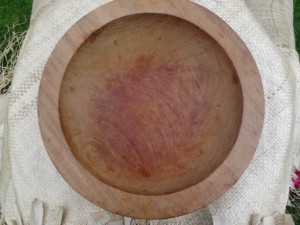Tanoa Fai’ava (Samoan Kava Bowl)
Date of Creation: Unknown
Materials: Ifilele tree (Instsia Bijuga)
Arrival in Dunedin: Unknown
Description: Brown wooden bowl 145mm height, 1215mm circumference, 384mm diameter, 40mm thickness of rim, 18 cylinder shape legs (one broken) 110mm in circumference.
Researcher: Seni Durutalo
History:
The tanoa fai’ava pictured here is originally from Samoa. In 2011, a family friend in Dunedin gifted this tanoa fai’ava to the Maliko family. The tanoa fai’ava is a symbol of Samoan cultural identity and is used in kava ceremonies. It comes in different sizes and is commonly used for large formal ceremonial gatherings, family uses or as souvenirs for tourists.
Kava from the tanoa fai’ava are filled into an ipu tau’ava (little coconut cups) and served to people according to their social rank within the community. For instance, chiefs drink first. Samoan migrants have taken the traditional practice of kava drinking with them and continue to practice this tradition in the various places they have settled.
Significance:
The significance of the tanoa fai’ava in a kava ceremony is that it brings the Samoan people together as a community and as a family. In Samoan culture, important occasions in life such as marriages, deaths, births, the installation of a chief, the bestowing of chiefly titles, family get-to-gathers and welcoming guests are celebrated around the tanoa fai’ava. Most importantly, in Samoan ceremonial use, it identifies one’s social standing within the community as a whole. Each person knows where he or she sits around the tanoa fai’ava.



